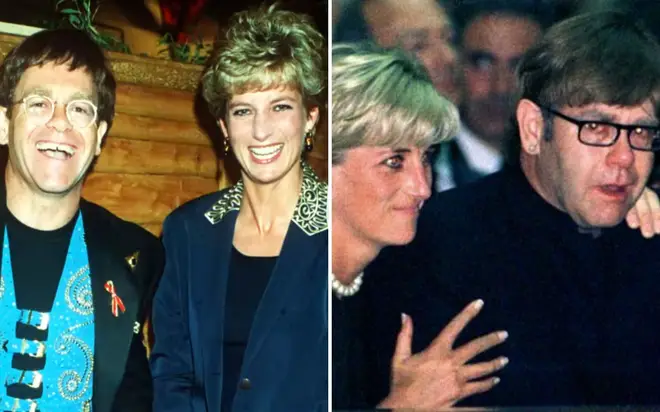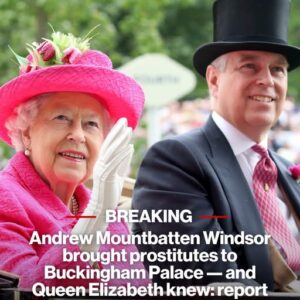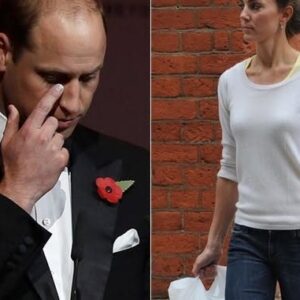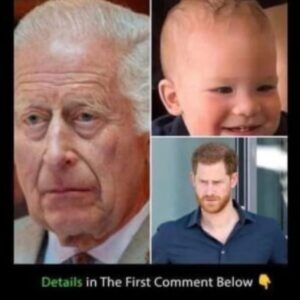
A rarely seen photograph of Princess Diana and rock icon David Bowie, taken during the 1980s, has recently resurfaced — nearly four decades after it was first captured. The image, showing the pair smiling together at a London charity concert, provides a fascinating glimpse into two of the most recognizable figures of the late 20th century.
While the photograph was once kept private, it has now been officially included in a new book about David Bowie’s life and career by photographer Denis O’Regan, who worked closely with the artist for many years. The photo’s reemergence sheds light on a moment that connects British royalty with one of music’s most enduring legends.
A Night to Remember: The 1987 Charity Concert
The photo dates back to 1987, when Princess Diana attended a charity concert at Wembley Stadium in London. According to The Telegraph and BBC Archives, Diana was well known for her support of charitable events, especially those promoting youth and the arts.
The concert, headlined by David Bowie, was organized to raise funds for children’s charities, a cause close to Diana’s heart. She attended the event as part of her ongoing efforts to connect with younger audiences and highlight the importance of creative expression.
Photographer Denis O’Regan, who was covering Bowie’s performance that evening, recalls that he was invited backstage by promoter Harvey Goldsmith, one of the UK’s most respected concert organizers. Goldsmith, who had worked with both Bowie and Queen on landmark live events like Live Aid (1985), helped facilitate the brief meeting between Diana and the musician.

Capturing the Moment
In interviews with The Daily Mail and BBC Radio, Denis O’Regan has described the encounter as “charming and respectful.” He said Bowie was delighted to meet the Princess of Wales, who had long admired his humanitarian work and musical innovation.
The moment was informal but memorable: Diana and Bowie shared a light conversation, exchanged smiles, and posed side by side for a single frame. O’Regan later described it as a “snapshot of mutual respect between two British icons who defined their respective worlds — royalty and rock.”
O’Regan kept the photograph in his archives, along with thousands of other Bowie images, many of which were unseen until recently.

Why the Photo Stayed Private for So Long
While the image itself was neither controversial nor inappropriate, it remained unpublished for decades. O’Regan has explained that the decision to withhold it was made out of professional discretion and respect for royal protocol, not secrecy.
At the time, photographs involving members of the royal family were subject to careful management. Royal engagements — even informal ones — were often reviewed by Palace communications staff before publication to ensure consistency with the royal family’s public image.
According to The Guardian, Princess Diana’s appearances in the 1980s drew intense media attention, and the Palace regularly sought to limit overexposure in the press. O’Regan later said he understood the need for privacy and chose to honor that approach.
His decision to keep the photo private was also consistent with professional ethics: as an accredited photographer working closely with public figures, O’Regan emphasized that respect and consent mattered as much as the photograph itself.

Diana’s Distinct Style and Public Image
The event also reflected one of Princess Diana’s enduring characteristics — her ability to balance elegance with relatability. Fashion historians have often noted that Diana’s style evolved significantly during the 1980s, moving toward a modern, confident expression that connected with younger audiences.
For the concert, she reportedly opted for a sleek evening outfit that blended royal sophistication with a touch of contemporary flair. Media coverage at the time highlighted her willingness to appear approachable and youthful while maintaining the grace expected of a royal.
According to Vogue UK, Diana’s wardrobe choices during this period often made subtle cultural statements. Her attendance at pop concerts, fashion shows, and charity galas helped bridge the gap between traditional royal duties and the everyday lives of the people she represented.
![]()
Rediscovery and Publication in a New Biography
In 2025, the long-hidden image was finally released as part of Denis O’Regan’s new David Bowie biography, a visual chronicle featuring rare and unpublished photographs from the artist’s career.
The book, published by a leading UK press and endorsed by Bowie’s estate, includes exclusive material from O’Regan’s years touring with Bowie. The inclusion of the Princess Diana photograph was described as a tribute to Bowie’s connection to British culture and his influence that transcended music.
The image offers a nostalgic reminder of a moment when two iconic figures briefly crossed paths — one representing the establishment, the other representing creative rebellion — both admired globally for their individuality and humanitarian outlook.
Diana and the World of Music
Princess Diana’s association with the music industry extended beyond this event. She met several major artists throughout her public life, including Elton John, George Michael, and Phil Collins, all of whom performed at or supported charitable initiatives alongside her.
Her friendship with Elton John, in particular, became one of the most publicly recognized celebrity-royal connections of the era. Their shared commitment to humanitarian work — especially in the fight against HIV/AIDS — became an enduring part of both of their legacies.
The photograph with Bowie thus represents more than a moment of celebrity — it captures the late Princess’s deep appreciation for art, music, and culture as bridges to connect with people across generations and backgrounds.
Legacy and Reflection
Today, more than 25 years after Princess Diana’s passing, her influence on the royal family’s relationship with popular culture remains significant. The resurfacing of this photograph coincides with renewed public interest in how she modernized the monarchy and reshaped global perceptions of the British royal family.
Historians and cultural commentators often credit her with transforming the image of the royal institution — from distant formality to empathetic leadership. Her willingness to engage with musicians, actors, and artists reflected her belief that cultural figures could help inspire social change.
Meanwhile, David Bowie’s own legacy — as a musical innovator and cultural icon — continues to inspire new generations. The image of him beside Princess Diana represents a symbolic meeting between two individuals who defied convention while remaining deeply connected to their public roles.

Conclusion
The release of the Princess Diana and David Bowie photograph after nearly 40 years offers more than just a glimpse into royal history — it serves as a reminder of the human connections behind fame and public duty.
Denis O’Regan’s respectful decision to finally share the image in his authorized biography ensures it can be appreciated in context: as a moment of grace, admiration, and cultural unity.
Far from being a “secret,” the photograph is now recognized as an artifact of its time — celebrating two beloved figures who each, in their own way, redefined what it meant to be British icons.






